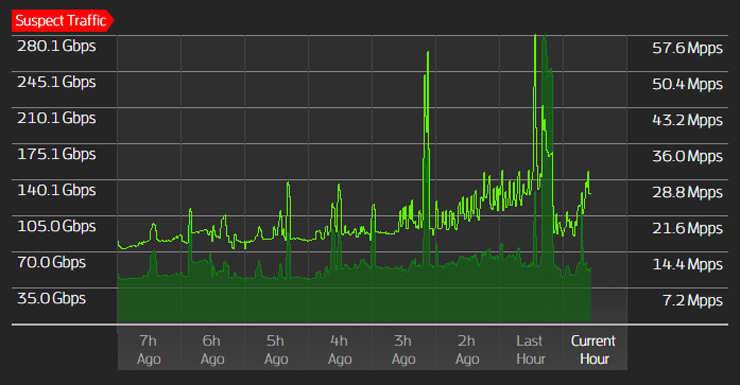
DDoS Attacks and DDoS Protection: Quick Guide
The threat of DDoS attacks looms large, posing a significant risk to the security and stability of online platforms. This article aims to unmask the various types of DDoS attacks, including Volumetric Attacks, UDP floods, SYN floods, NTP amplification, DNS amplification, SSDP amplification, IP fragmentation, SYN-ACK floods, and attacks targeting different layers of the network. We will also explore the implications of botnets in DDoS attacks, the increasing prevalence of attacks from mobile devices, the top 10 countries of origin for DDoS attacks, and effective strategies to prevent and defend against these malicious assaults. Additionally, we will address the legality of DDoS attacks and the role of Cloudflare in providing robust DDoS protection solutions.
Table of Contents
Types of DDoS Attacks
DDoS (Distributed Denial of Service) attacks are a malicious attempt to disrupt the regular functioning of a network, service, or website by overwhelming it with a flood of internet traffic. There are several types of DDoS attacks, each with its own unique characteristics and impact.

1. Volumetric Attacks: These attacks aim to consume the target’s bandwidth, rendering it inaccessible. Attackers flood the network with a massive volume of traffic, often using botnets or amplification techniques to maximize the impact.
2. TCP State-Exhaustion Attacks: By exploiting the limitations of network protocols, such as TCP handshake initiation, attackers exhaust the target’s connection state tables. This prevents legitimate users from establishing connections.
3. Application Layer Attacks: These attacks target the application layer of a network, overwhelming specific resources like web servers, databases, or APIs. Common techniques include HTTP floods or slow POST attacks.
4. Fragmentation Attacks: Attackers send a flood of IP fragments that are difficult to reassemble, consuming server resources and causing network congestion.
5. DNS Amplification Attacks: By sending small DNS queries with spoofed source IP addresses, attackers trick DNS servers into sending large responses to the victim’s IP, overwhelming its bandwidth.
6. IoT-based Attacks: Botnets comprising compromised Internet of Things (IoT) devices are used to launch massive DDoS attacks. These attacks exploit the weak security of IoT devices, making them powerful weapons.
DDoS attacks continue to evolve, becoming more sophisticated and harder to mitigate. Organizations must employ robust security measures, including traffic filtering, rate limiting, and DDoS protection services, to safeguard their networks and services from these disruptive attacks. 🛡️
Volumetric Attacks
Volumetric attacks, also known as DDoS (Distributed Denial of Service) attacks, are a type of cyber assault that aims to overwhelm a target’s network or server by flooding it with a massive amount of traffic. These attacks are executed by a botnet, a network of compromised computers or devices controlled by a single attacker.
The goal of a volumetric attack is to exhaust the target’s resources, rendering it unable to respond to legitimate user requests. This can lead to severe consequences such as website downtime, loss of revenue, and damage to a company’s reputation.

Volumetric attacks can take various forms:
1. UDP Flood: This attack floods the target with User Datagram Protocol (UDP) packets, overwhelming its network capacity.
2. ICMP Flood: Here, the attacker sends a large number of Internet Control Message Protocol (ICMP) packets to the target, causing network congestion.
3. SYN Flood: This attack exploits the TCP three-way handshake process by sending a flood of SYN requests, exhausting the target’s resources.
To protect against volumetric attacks, organizations can employ various security measures, including traffic filtering, rate limiting, and deploying DDoS mitigation services. These solutions help identify and block malicious traffic, ensuring the availability and stability of the network.
🔒 It is crucial for businesses to stay vigilant and regularly update their security systems to defend against the evolving threat landscape posed by volumetric attacks.
UDP Floods
UDP Floods: UDP (User Datagram Protocol) floods are a type of DDoS (Distributed Denial of Service) attack that targets network infrastructure by overwhelming it with a flood of UDP packets. Unlike TCP (Transmission Control Protocol), UDP is connectionless and does not require a handshake before sending data, making it easier to exploit.
How it works: Attackers send a large volume of UDP packets to a target’s IP address, often using spoofed source IP addresses to make it difficult to trace the origin. The target’s network becomes overwhelmed as it tries to process and respond to each packet, resulting in a denial of service for legitimate users.
Impact: UDP floods can disrupt network services, causing websites to become inaccessible, online gaming to lag or crash, and VoIP (Voice over Internet Protocol) calls to drop. Additionally, the attack can consume network bandwidth and exhaust system resources, leading to performance degradation.
Prevention and mitigation: Network administrators can implement various measures to protect against UDP floods, such as rate limiting, traffic filtering, and deploying firewalls or intrusion prevention systems. Additionally, working with ISPs to detect and block malicious traffic can help mitigate the impact of UDP floods.
🔒 Protecting against UDP floods is crucial for maintaining the availability and stability of network services. Regular security assessments and staying updated on emerging attack techniques are essential to defend against such threats.
SYN Floods
SYN Floods: A SYN flood is a type of denial-of-service (DoS) attack that targets the TCP three-way handshake process. This attack floods the target server with a high volume of SYN requests, overwhelming its resources and rendering it unable to respond to legitimate requests.
How it works: During the TCP three-way handshake, the client sends a SYN packet to the server, which responds with a SYN-ACK packet, and the client acknowledges with an ACK packet. In a SYN flood attack, the attacker sends a flood of SYN packets with spoofed source IP addresses, causing the server to allocate resources for incomplete connections and wait for ACK packets that never arrive. This exhausts the server’s resources, leading to a denial of service.
Impact: SYN floods can disrupt online services, causing websites to become slow or completely unavailable. They can also lead to increased network latency and affect other systems sharing the same network.
Prevention and mitigation: Network administrators can implement various measures to protect against SYN floods, such as SYN cookies, rate limiting, and firewalls. Intrusion detection and prevention systems (IDPS) can also help detect and mitigate such attacks.
SYN floods are a significant threat to online services, and organizations should prioritize implementing robust security measures to safeguard their networks and mitigate the impact of these attacks.
NTP Amplification
NTP Amplification is a type of Distributed Denial of Service (DDoS) attack that exploits the Network Time Protocol (NTP) servers. NTP is a protocol used to synchronize the clocks of computers over a network. However, attackers can abuse this protocol to amplify the volume of traffic directed towards a target, overwhelming its resources and causing service disruptions.
In an NTP Amplification attack, the attacker spoofs the source IP address and sends a small query to an NTP server, requesting a large amount of data to be sent to the victim’s IP address. The server, unaware of the spoofed IP, responds by sending a significantly larger response to the victim, amplifying the attack traffic. This amplification effect allows attackers to generate massive amounts of traffic with minimal effort.
NTP Amplification attacks can result in severe network congestion and downtime for the targeted system. To mitigate such attacks, network administrators should implement measures like rate limiting, access control lists, and firewall rules to restrict access to NTP servers. Additionally, keeping NTP servers up to date with the latest security patches is crucial.
🔒 It is important to note that NTP Amplification attacks can be prevented by implementing proper security measures and regularly monitoring network traffic. By staying vigilant and proactive, organizations can protect their systems from potential DDoS attacks and ensure uninterrupted service availability.
DNS Amplification
DNS amplification is a type of distributed denial-of-service (DDoS) attack that exploits the Domain Name System (DNS) protocol. It involves sending a small DNS query to an open DNS resolver, which then responds with a much larger response. This amplification effect allows attackers to overwhelm the target’s network with a flood of traffic.

The attack begins by spoofing the source IP address of the DNS query, making it appear as if the request is coming from the target’s IP address. The attacker then sends multiple queries to open DNS resolvers, requesting information about a specific domain. These resolvers, unaware of the spoofed IP address, respond with large DNS responses that are sent to the target’s IP address.
DNS amplification attacks are highly effective because the response from the DNS resolver is significantly larger than the original query, resulting in a massive traffic influx. This can quickly saturate the target’s network, causing it to become unresponsive and potentially leading to service disruption.
To mitigate DNS amplification attacks, network administrators can implement measures such as rate limiting, access control lists, and source IP verification. Additionally, Internet Service Providers (ISPs) can help by filtering and blocking traffic from open DNS resolvers.
In conclusion, DNS amplification attacks exploit the DNS protocol to generate massive traffic volumes, overwhelming the target’s network. Implementing proper security measures and collaborating with ISPs can help mitigate the impact of these attacks.
SSDP Amplification
SSDP (Simple Service Discovery Protocol) Amplification is a type of Distributed Denial of Service (DDoS) attack that exploits the SSDP protocol to overwhelm a target network or server with a flood of traffic.
SSDP is a network protocol used by devices, such as routers and printers, to discover and communicate with each other on a local network. However, cybercriminals can abuse this protocol by sending forged requests to a large number of vulnerable devices, tricking them into sending responses to the target’s IP address. This results in a significant amplification of traffic, as the response is much larger than the initial request.
The amplification factor of SSDP attacks can be as high as 30 to 100 times, making it an attractive method for attackers to generate massive amounts of traffic without needing a large botnet. This type of attack can quickly overwhelm the target’s network infrastructure, causing service disruptions and rendering the system inaccessible to legitimate users.
To mitigate SSDP amplification attacks, network administrators should disable SSDP on devices that do not require it, implement access control lists to restrict SSDP traffic, and ensure devices are running the latest firmware with security patches. Additionally, network monitoring and traffic analysis tools can help detect and mitigate such attacks in real-time.
🔒 It is crucial for organizations to stay vigilant and take proactive measures to protect their networks from SSDP amplification attacks, as they can have severe consequences on business operations and user experience.
IP Fragmentation
SYN-ACK Floods
SYN-ACK floods, also known as TCP SYN-ACK reflection attacks, are a type of DDoS (Distributed Denial of Service) attack that exploit the TCP three-way handshake process. This attack floods the target server with a high volume of SYN-ACK packets, overwhelming its resources and causing service disruption.
During a TCP three-way handshake, a client sends a SYN (synchronize) packet to the server, which responds with a SYN-ACK (synchronize-acknowledge) packet, and finally, the client sends an ACK (acknowledge) packet to establish a connection. In a SYN-ACK flood, the attacker spoofs the source IP address, sending numerous SYN packets to multiple servers, making them respond with SYN-ACK packets to the victim’s IP address. As a result, the victim’s server becomes overwhelmed with these half-open connections, exhausting its resources and rendering it unable to handle legitimate requests.
SYN-ACK floods are particularly challenging to mitigate as they exploit the stateful nature of TCP connections. Traditional mitigation techniques, such as rate limiting or filtering, may not be effective against these attacks. Advanced DDoS protection solutions that can analyze traffic patterns and distinguish between legitimate and malicious SYN-ACK packets are necessary to mitigate the impact.
In conclusion, SYN-ACK floods are a form of DDoS attack that exploit the TCP three-way handshake process. These attacks can cause significant disruption to targeted servers, and specialized DDoS protection measures are required to effectively mitigate their impact.
Network (Layer 3)
The Network Layer, also known as Layer 3, is a crucial component of the OSI (Open Systems Interconnection) model. It focuses on the transportation of data packets across different networks, enabling communication between devices. This layer ensures that data is delivered reliably and efficiently from the source to the destination.

Layer 3 attacks, occurring at the Network Layer of the OSI (Open Systems Interconnection) model, are a prevalent form of Distributed Denial of Service (DDoS) attacks. They primarily target the infrastructure responsible for routing and forwarding data packets across the network. By exploiting vulnerabilities at this layer, attackers can disrupt the normal flow of data, causing significant service degradation or complete outages.
Characteristics of Layer 3 Attacks
- Volume-Based Tactics: These attacks often involve a massive influx of packets, overwhelming the target’s bandwidth and rendering services inaccessible.
- Protocol Exploitation: Attackers exploit protocols like IP and ICMP to flood the network with excessive requests, such as IP spoofing or ICMP echo requests (Ping floods).
- Direct Impact on Routing: By targeting routers and switches, these attacks can disrupt the core routing functions of a network, affecting a wide range of services and users.
Transport (Layer 4)
Layer 4 attacks, occurring at the Transport Layer of the OSI (Open Systems Interconnection) model, are a common type of Distributed Denial of Service (DDoS) attack. They target the layer responsible for facilitating data transfer between end systems and the seamless flow of data across networks. By exploiting protocols like TCP (Transmission Control Protocol) and UDP (User Datagram Protocol), attackers aim to disrupt the connection and session control mechanisms that are essential for stable communication.
Characteristics of Layer 4 Attacks
- Protocol Exploitation: These attacks typically exploit TCP and UDP protocols, bombarding the target with an overwhelming number of requests, which leads to service disruption.
- SYN Flood: A common technique is the SYN flood, where an attacker sends a succession of SYN requests to a target’s system in an attempt to consume enough server resources to make the system unresponsive to legitimate traffic.
- UDP Flood: In a UDP flood, the attacker sends large numbers of UDP packets to random ports on a remote host, causing the host to repeatedly check for the application listening at that port and respond with an ICMP Destination Unreachable packet, thus saturating the network.
Presentation (Layer 6)
Application (Layer 7)
The Application Layer, also known as Layer 7, is the topmost layer of the OSI model. It is responsible for providing network services to user applications. This layer interacts directly with software applications and enables communication between different devices over a network.
At Layer 7, protocols such as HTTP, FTP, SMTP, and DNS are utilized to facilitate data exchange between applications. These protocols define the rules and formats for data transmission, ensuring seamless communication between the sender and receiver.
One of the key features of Layer 7 is its ability to understand the content of the data being transmitted. This allows for advanced functionalities such as content filtering, encryption, and authentication. Layer 7 firewalls, for example, can inspect the application layer data to detect and block malicious traffic.
Moreover, Layer 7 plays a crucial role in enabling the development of web applications. It allows for the creation of user-friendly interfaces, data processing, and server-side scripting. This layer also facilitates the integration of various services and APIs, enhancing the functionality and interactivity of web applications.
Layer 7 DDoS attacks target the Application Layer of the OSI model, the closest layer to the end user. These attacks focus on exhausting the resources of web applications rather than network components. They are often more sophisticated and difficult to detect than lower-layer attacks due to their resemblance to legitimate traffic.
Key aspects of Layer 7 DDoS attacks:
- HTTP Flood: A common method where attackers send a high volume of HTTP requests to overload web servers or applications.
- Slowloris: This involves opening multiple connections to the server and keeping them open as long as possible, gradually exhausting server resources.
- Low-and-Slow Attacks: These are designed to send requests at a rate that appears normal but is consistent and persistent enough to exhaust resources over time.
Defenses against Layer 7 attacks typically involve:
- Web Application Firewalls (WAFs): These can identify and filter out malicious traffic.
- Rate Limiting: Limiting the number of requests a user can make within a certain timeframe.
- Behavioral Analysis: Analyzing traffic patterns to distinguish between legitimate users and bots.
Botnets Implication in DDoS Attacks
Botnets have become a significant threat in the realm of Distributed Denial of Service (DDoS) attacks. A botnet is a network of compromised computers, known as bots or zombies, that are controlled by a central command and control (C&C) server. These bots are usually infected with malware, allowing the attacker to remotely control them without the knowledge of their owners. 
The implications of botnets in DDoS attacks are severe. By harnessing the power of numerous bots, attackers can overwhelm a target’s servers with a massive influx of traffic, rendering them inaccessible to legitimate users. This can have detrimental consequences for businesses, causing financial losses, reputational damage, and customer dissatisfaction.
Botnets provide several advantages to attackers. Firstly, they offer a high level of anonymity, making it difficult to trace the source of the attack. Secondly, the sheer number of bots at their disposal enables attackers to launch large-scale and highly disruptive attacks. Lastly, botnets can be rented or sold on the dark web, allowing even non-technical individuals to carry out DDoS attacks.
To mitigate the impact of botnet-driven DDoS attacks, organizations must employ robust security measures. This includes implementing firewalls, intrusion detection systems, and DDoS mitigation services. Additionally, regular software updates and user education on safe online practices are crucial in preventing bot infections.
In conclusion, botnets have revolutionized the landscape of DDoS attacks, posing a significant threat to businesses and individuals alike. Understanding their implications and taking proactive measures is essential in safeguarding against these disruptive and damaging attacks. 🤖
Increasing DDoS Attacks from Mobile Devices
In recent years, there has been a significant rise in Distributed Denial of Service (DDoS) attacks originating from mobile devices. This alarming trend can be attributed to the increasing number of smartphones and tablets being used worldwide.

DDoS attacks occur when a network or website is overwhelmed with a flood of traffic, rendering it inaccessible to legitimate users. Traditionally, these attacks were launched from compromised computers, but now cybercriminals are leveraging the power of mobile devices to carry out their malicious activities.
One of the main reasons behind the surge in mobile DDoS attacks is the sheer number of vulnerable devices. Many users fail to update their mobile operating systems regularly, leaving them exposed to known vulnerabilities that can be exploited by attackers. Additionally, the widespread availability of botnets for hire allows cybercriminals to easily control thousands of infected mobile devices simultaneously.
Another factor contributing to the rise in mobile DDoS attacks is the increasing bandwidth and processing power of smartphones. With faster internet connections and more powerful hardware, attackers can launch larger and more sophisticated attacks, causing even greater damage.
To combat this growing threat, it is crucial for mobile users to prioritize security measures. Regularly updating mobile devices, installing reputable security software, and being cautious when downloading apps or clicking on suspicious links can help mitigate the risk of being involved in a DDoS attack.
In conclusion, the increasing prevalence of mobile devices has opened up new avenues for cybercriminals to launch DDoS attacks. As technology continues to advance, it is essential for individuals and organizations to stay vigilant and take proactive steps to protect themselves from these evolving threats.
DDoS Attacks Origin Countries: Top 10

DDoS (Distributed Denial of Service) attacks have become a major concern for organizations worldwide. These attacks aim to overwhelm a target’s network or website, rendering it inaccessible to legitimate users. While DDoS attacks can originate from anywhere, certain countries have gained notoriety for being hotspots of such malicious activities. Here are the top 10 countries associated with DDoS attack origins:
1. China: Known for its large botnet infrastructure, China has consistently topped the list of countries hosting DDoS attacks.
2. United States: With its vast number of compromised devices, the US is a significant source of DDoS attacks, often involving IoT devices.
3. Russia: Cybercriminals in Russia have been linked to numerous DDoS attacks, leveraging their technical expertise and underground marketplaces.
4. South Korea: This tech-savvy nation has witnessed a rise in DDoS attacks, often targeting government websites and financial institutions.
5. Vietnam: DDoS attacks originating from Vietnam have been on the rise, primarily targeting neighboring countries and political dissidents.
6. Brazil: Known for its active hacking community, Brazil has seen an increase in DDoS attacks, often motivated by political or ideological reasons.
7. India: With its large population and growing internet connectivity, India has become a significant source of DDoS attacks, particularly targeting domestic websites.
8. Germany: Cybercriminals in Germany have been involved in orchestrating DDoS attacks, often using botnets to carry out their malicious activities.
9. Taiwan: This country has experienced a surge in DDoS attacks, primarily targeting government and educational institutions.
10. France: While not as prominent as other countries on this list, France has witnessed an increase in DDoS attacks, often associated with hacktivist groups.
It is important to note that the origin of DDoS attacks can be masked or spoofed, making it challenging to pinpoint the true source. Organizations must remain vigilant and employ robust cybersecurity measures to mitigate the impact of these attacks.
How to Prevent DDoS Attacks
DDoS attacks (Distributed Denial of Service) can be devastating for businesses, causing website downtime, financial losses, and damage to reputation. However, there are several measures that can be taken to prevent such attacks and ensure the smooth functioning of online services.
1. Implement a robust firewall: A firewall acts as a barrier between your network and potential attackers, filtering out malicious traffic and preventing unauthorized access.
2. Use a content delivery network (CDN): CDNs distribute website content across multiple servers, making it difficult for attackers to overwhelm a single server with traffic.
3. Regularly update software: Keeping all software, including operating systems, web servers, and applications, up to date is crucial. Updates often include security patches that address vulnerabilities exploited by attackers.
4. Deploy intrusion detection and prevention systems (IDPS): IDPS can detect and block suspicious network traffic, helping to identify and mitigate potential DDoS attacks.
5. Utilize rate limiting and traffic filtering: Setting limits on the number of requests a server can handle from a single IP address can prevent attackers from overwhelming the system.
6. Consider using a DDoS mitigation service: These services specialize in identifying and mitigating DDoS attacks, providing an additional layer of protection.
By implementing these preventive measures, businesses can significantly reduce the risk of falling victim to DDoS attacks, ensuring the availability and security of their online services. Remember, staying proactive and regularly reviewing security measures is essential in the ever-evolving landscape of cyber threats. 😊
Are DDoS Attacks Illegal?
DDoS attacks (Distributed Denial of Service)🚫💻 involve overwhelming a target’s network or website with a flood of internet traffic, rendering it inaccessible to users. These attacks are typically carried out using a network of compromised computers, known as a botnet. But are DDoS attacks illegal?
Yes, DDoS attacks are illegal in most jurisdictions. They are considered a form of cybercrime and are subject to legal consequences. Perpetrators can face severe penalties, including imprisonment and hefty fines. The reason behind their illegality is that DDoS attacks disrupt the normal functioning of websites and networks, causing financial losses and damaging reputations.
However, there are some exceptions. In certain cases, DDoS attacks may be authorized by law enforcement agencies or security professionals for testing purposes, known as ethical hacking. These authorized attacks are conducted with the consent of the target and are aimed at identifying vulnerabilities and improving security measures.
It is important to note that even participating in or hiring someone to carry out a DDoS attack is illegal. The use of botnets, malware, or any other means to launch such attacks is strictly prohibited.
Will Cloudflare Help Me Defend Against DDoS Attacks?
Cloudflare is a renowned web infrastructure and security company that offers a range of services to protect websites from various cyber threats, including Distributed Denial of Service (DDoS) attacks. DDoS attacks aim to overwhelm a website’s servers with a flood of traffic, rendering it inaccessible to legitimate users.

Cloudflare’s robust network infrastructure and advanced security measures make it an effective defense against DDoS attacks. By routing website traffic through its global network, Cloudflare can identify and filter out malicious traffic, ensuring that only legitimate requests reach the website’s servers. This helps prevent server overload and keeps the website up and running smoothly.
Cloudflare’s DDoS protection is powered by advanced algorithms and machine learning, allowing it to quickly detect and mitigate attacks in real-time. It can differentiate between legitimate traffic and malicious requests, effectively blocking harmful traffic while allowing genuine users to access the website without interruption.
Moreover, Cloudflare’s extensive network capacity enables it to absorb and mitigate even the largest and most sophisticated DDoS attacks. By distributing traffic across its global network, Cloudflare can handle massive volumes of requests, ensuring that websites remain online and accessible during an attack.
With DDoS-protected dedicated servers and our Cloudflare-optimized dedicated servers, websites can enjoy enhanced 🛡️ security, improved performance, and uninterrupted availability, safeguarding their online presence.
Solutions to Defend Against DDoS Attacks
DDoS attacks can be devastating for businesses, causing significant downtime, financial losses, and damage to reputation. However, there are several effective solutions to defend against these attacks.

1. Traffic Filtering: Implementing traffic filtering mechanisms, such as firewalls and intrusion prevention systems, can help identify and block malicious traffic, preventing it from overwhelming the network.
2. Load Balancing: Distributing incoming traffic across multiple servers can help prevent a single point of failure and ensure that no single server becomes overwhelmed by the attack.
3. Content Delivery Network (CDN): Utilizing a CDN can help distribute traffic geographically, reducing the impact of a DDoS attack by spreading it across multiple servers.
4. Rate Limiting: Setting limits on the number of requests from a single IP address can help mitigate the impact of an attack by slowing down the rate of incoming traffic.
5. DDoS Mitigation Services: Employing the services of a specialized DDoS mitigation provider can offer real-time monitoring and detection, as well as advanced filtering techniques to block malicious traffic.
6. Incident Response Plan: Having a well-defined incident response plan in place can help minimize the impact of a DDoS attack by enabling quick and effective response, including communication with stakeholders and coordination with relevant authorities.
By implementing these solutions, businesses can enhance their resilience against DDoS attacks and minimize the potential damage caused by such malicious activities.
Conclusion
In conclusion, the threat of DDoS attacks continues to loom large in the digital landscape, making it imperative for organizations to prioritize robust DDoS protection measures. As highlighted in this article, DDoS attacks have become increasingly sophisticated and damaging, capable of disrupting critical online services and causing significant financial losses. Therefore, it is crucial for businesses to implement comprehensive DDoS protection strategies to safeguard their digital fortresses.
One key takeaway from this article is the importance of choosing a reliable and experienced DDoS protection provider. By partnering with a trusted vendor, organizations can benefit from advanced mitigation techniques and real-time monitoring, ensuring prompt detection and mitigation of DDoS attacks.
Additionally, employing a multi-layered defense approach is vital in mitigating the impact of DDoS attacks. This includes implementing traffic filtering, rate limiting, and load balancing techniques, as well as leveraging the power of cloud-based DDoS protection services.
Furthermore, organizations must regularly assess and update their DDoS protection strategies to keep pace with evolving attack techniques. This involves conducting vulnerability assessments, staying informed about emerging threats, and continuously fine-tuning defense mechanisms.
In conclusion, safeguarding your digital fortress against DDoS attacks requires a proactive and comprehensive approach. By investing in robust DDoS protection measures, organizations can fortify their online presence, protect their critical assets, and ensure uninterrupted business operations.


This article incorporates information and material from various online sources. We acknowledge and appreciate the work of all original authors, publishers, and websites. While every effort has been made to appropriately credit the source material, any unintentional oversight or omission does not constitute a copyright infringement. All trademarks, logos, and images mentioned are the property of their respective owners. If you believe that any content used in this article infringes upon your copyright, please contact us immediately for review and prompt action.
This article is intended for informational and educational purposes only and does not infringe on the rights of the copyright owners. If any copyrighted material has been used without proper credit or in violation of copyright laws, it is unintentional and we will rectify it promptly upon notification. Please note that the republishing, redistribution, or reproduction of part or all of the contents in any form is prohibited without express written permission from the author and website owner. For permissions or further inquiries, please contact us.


